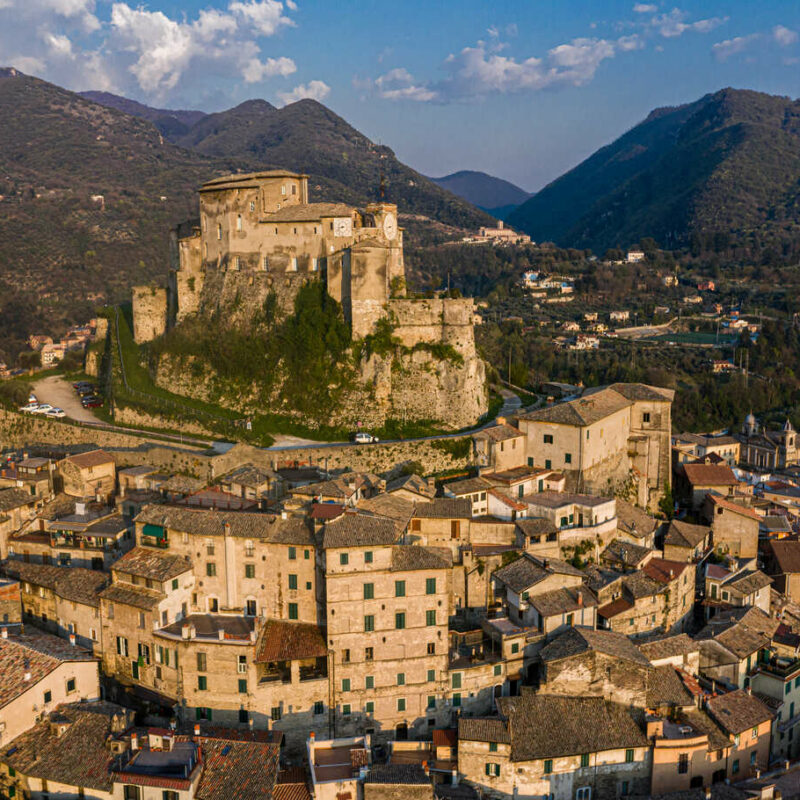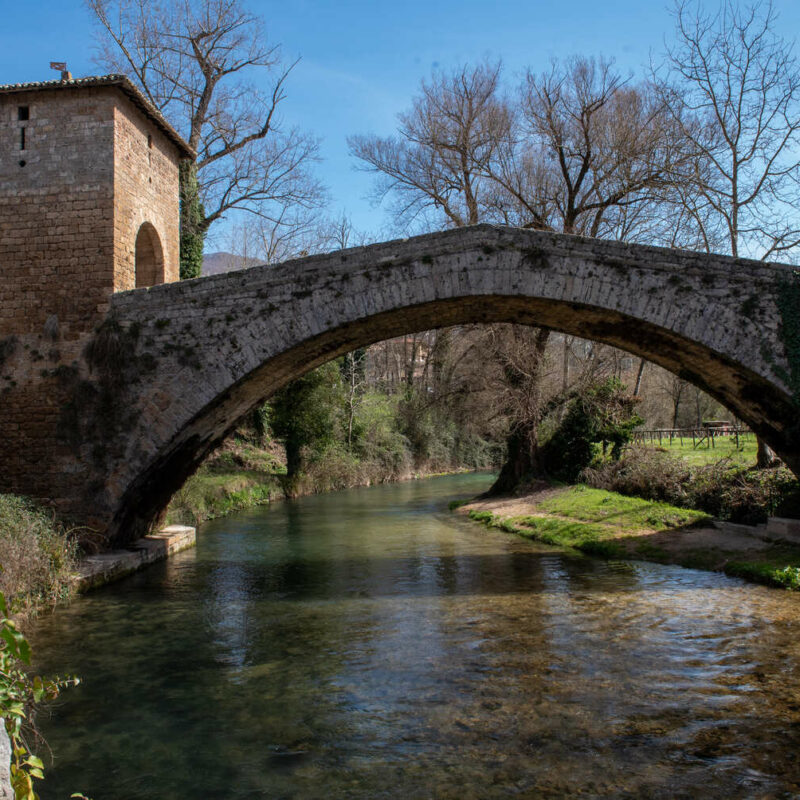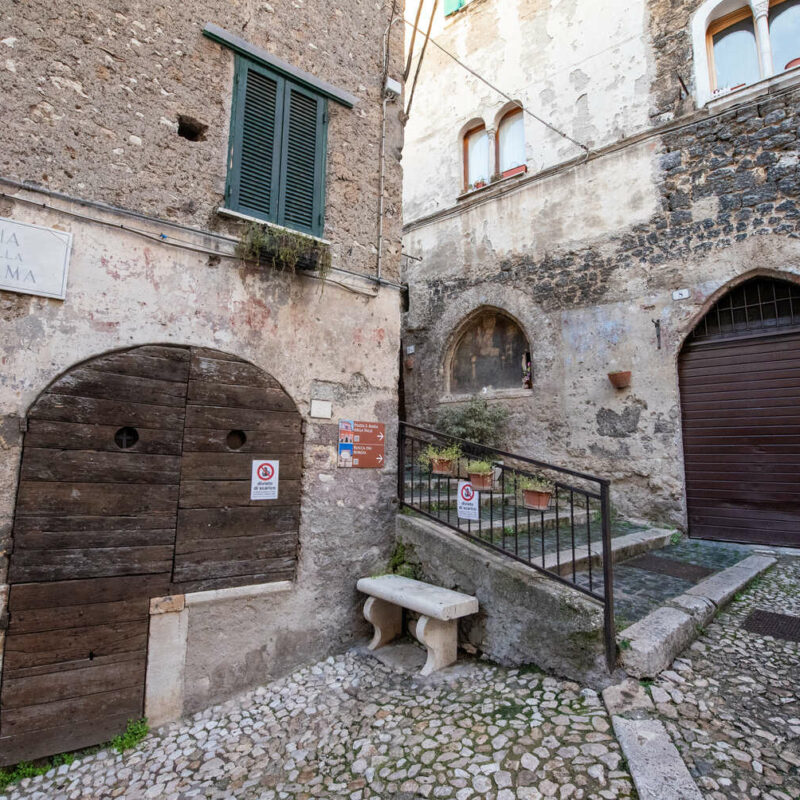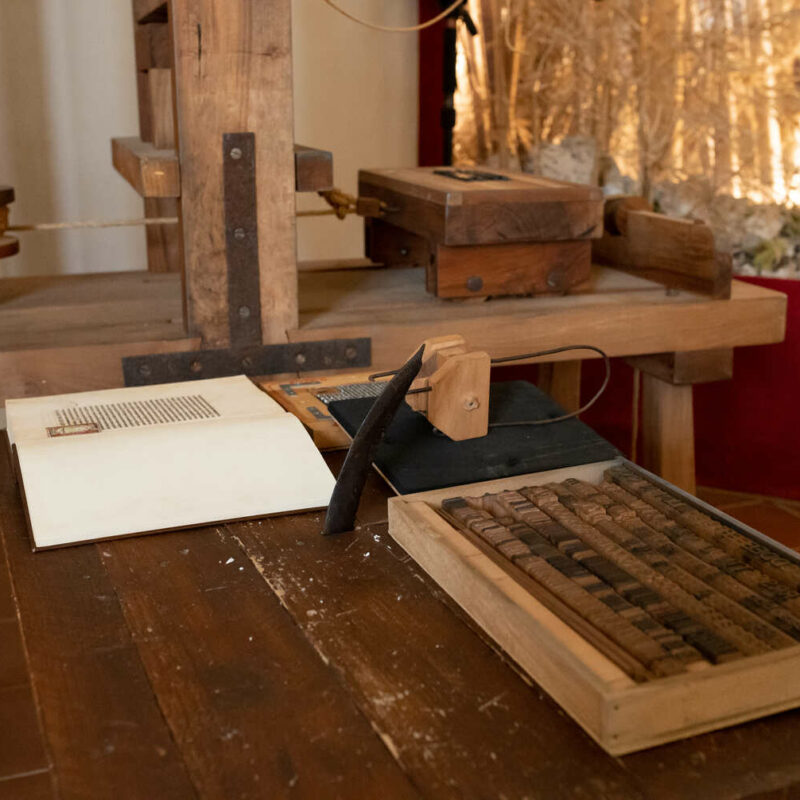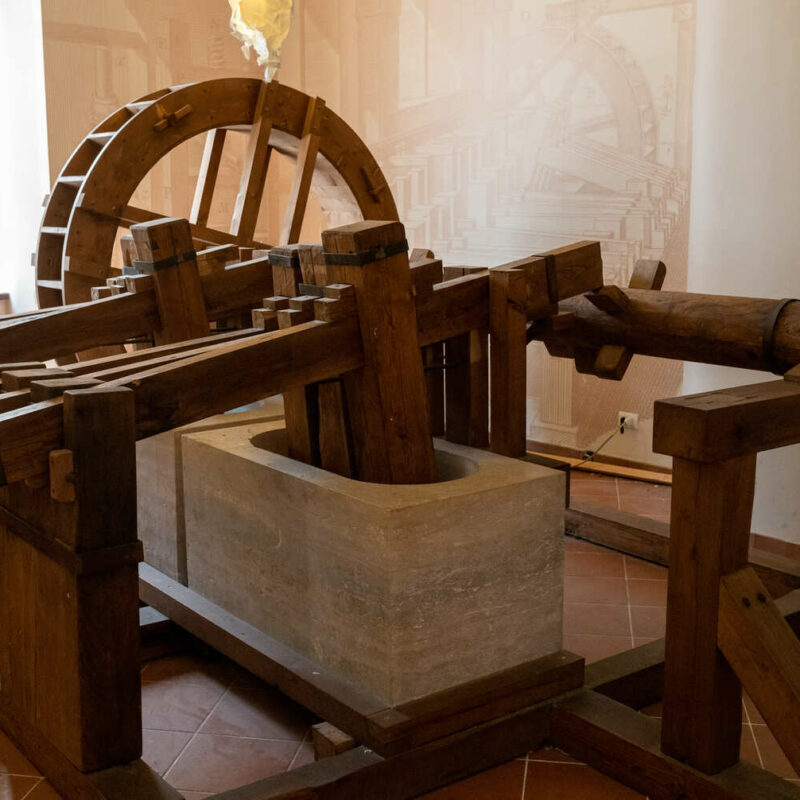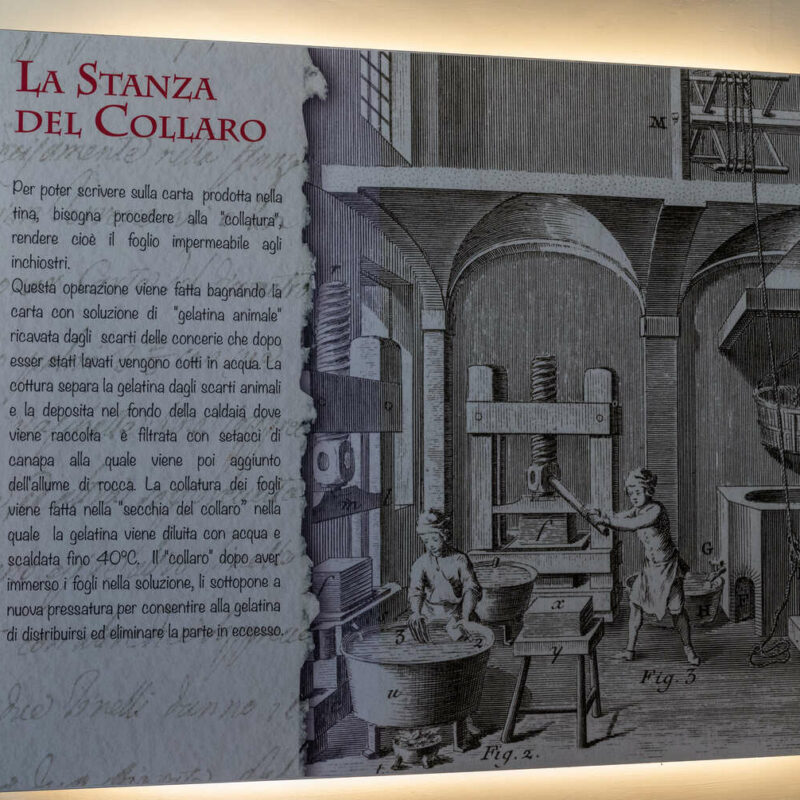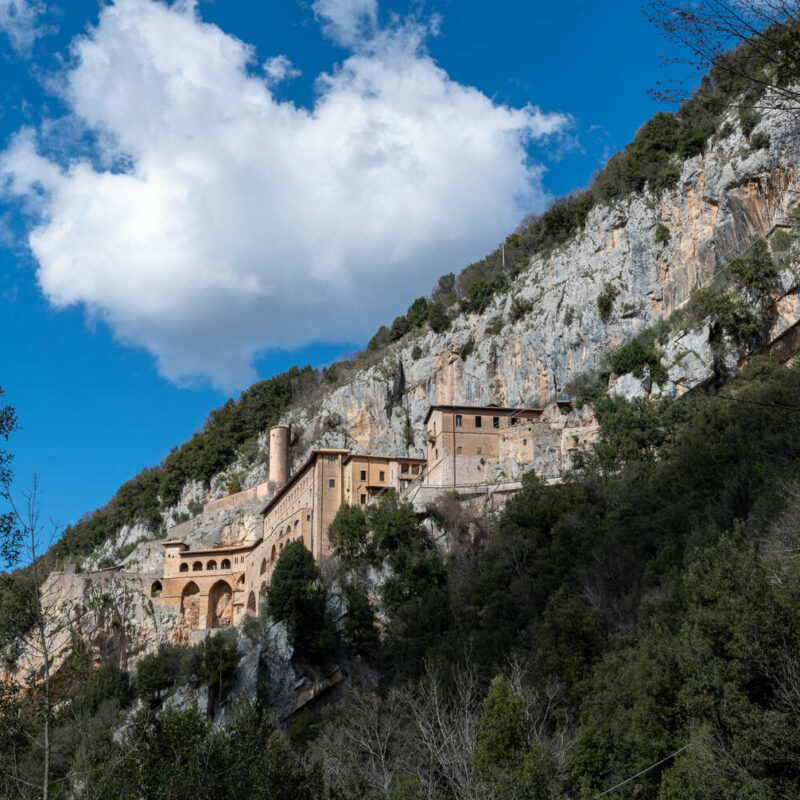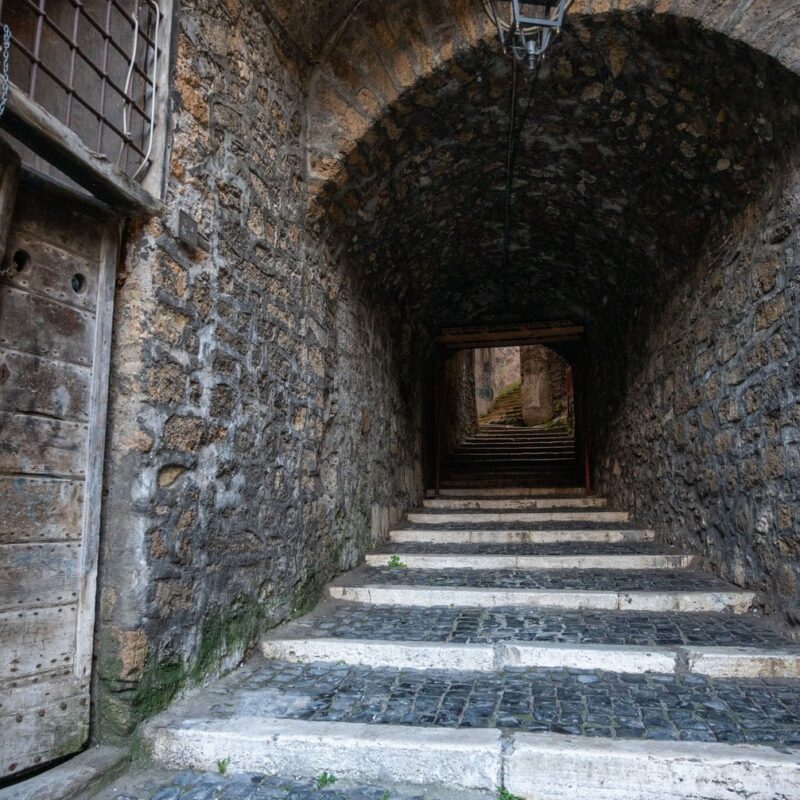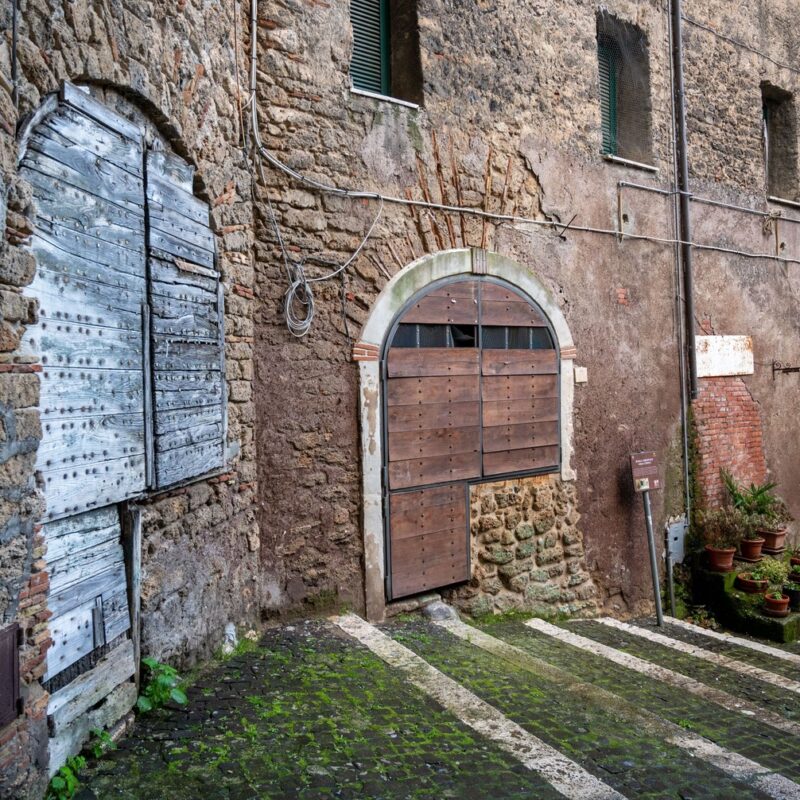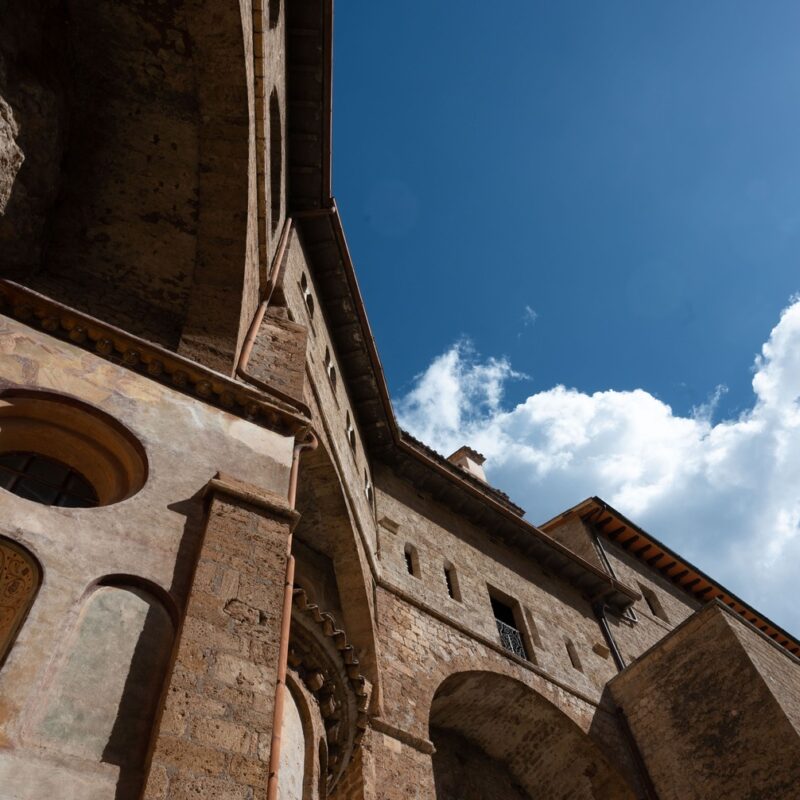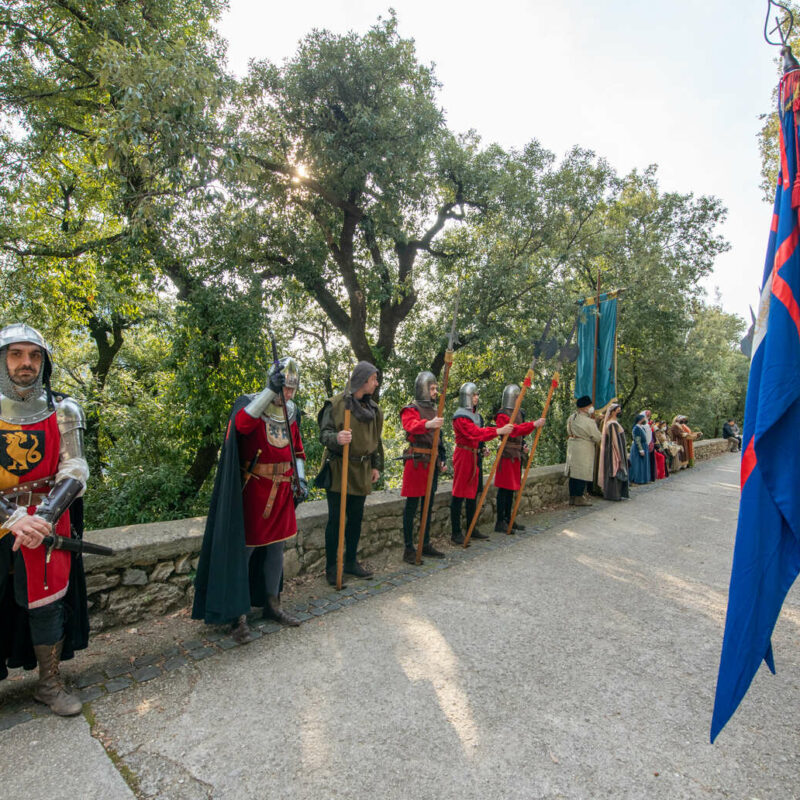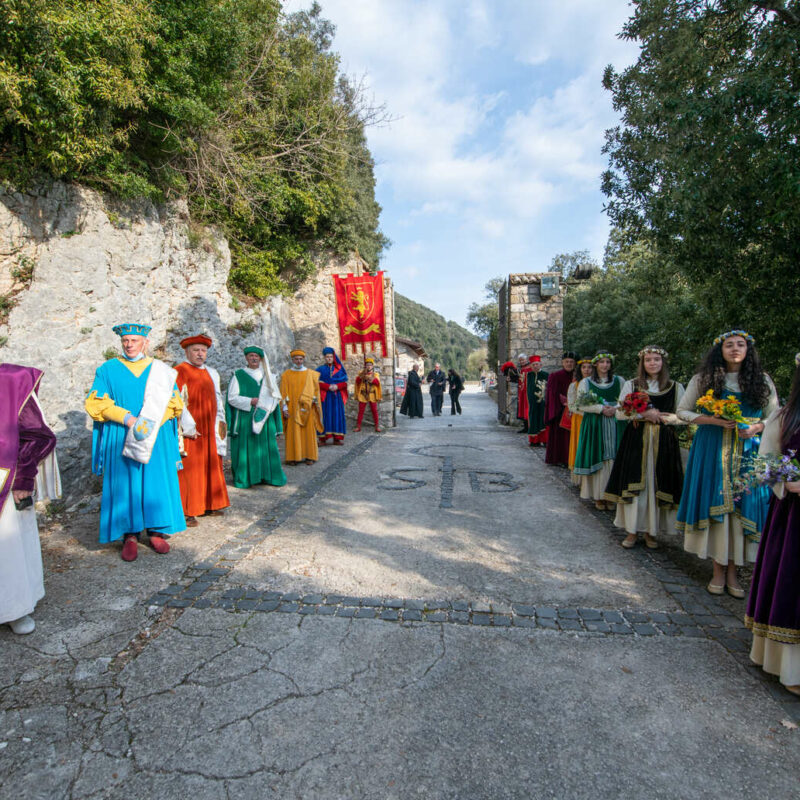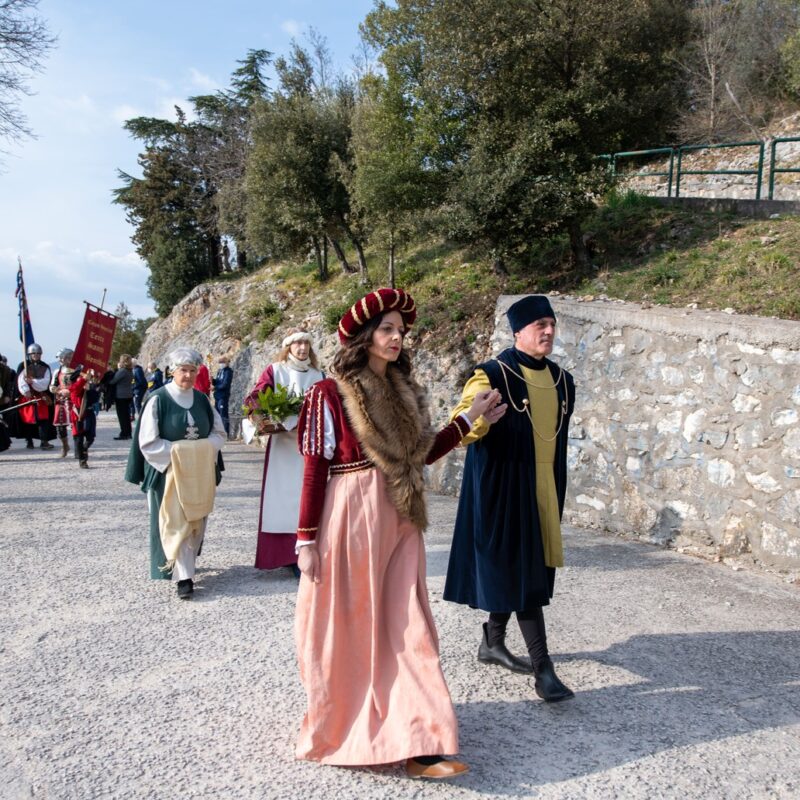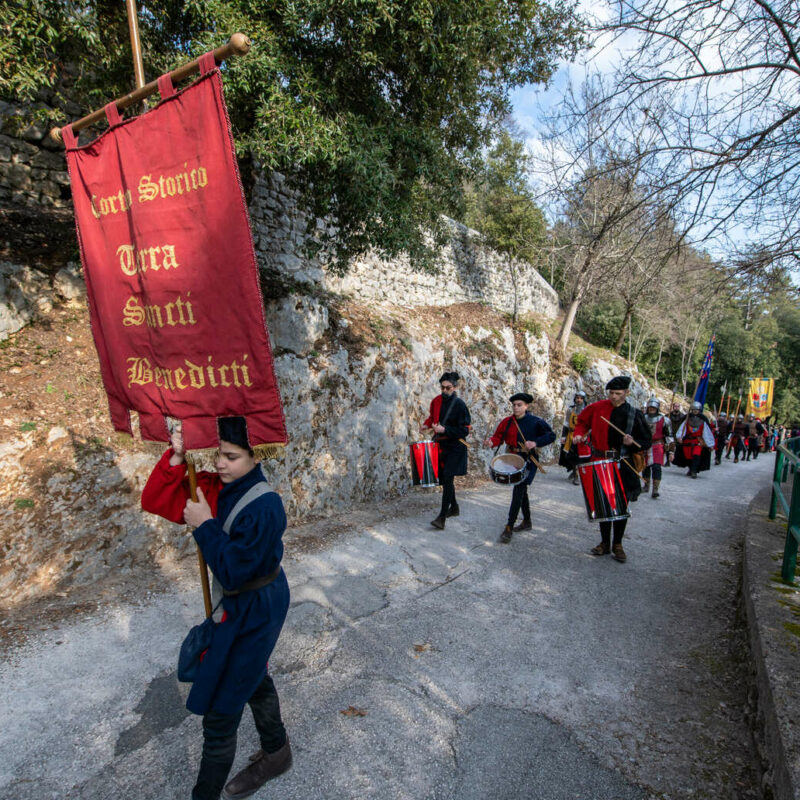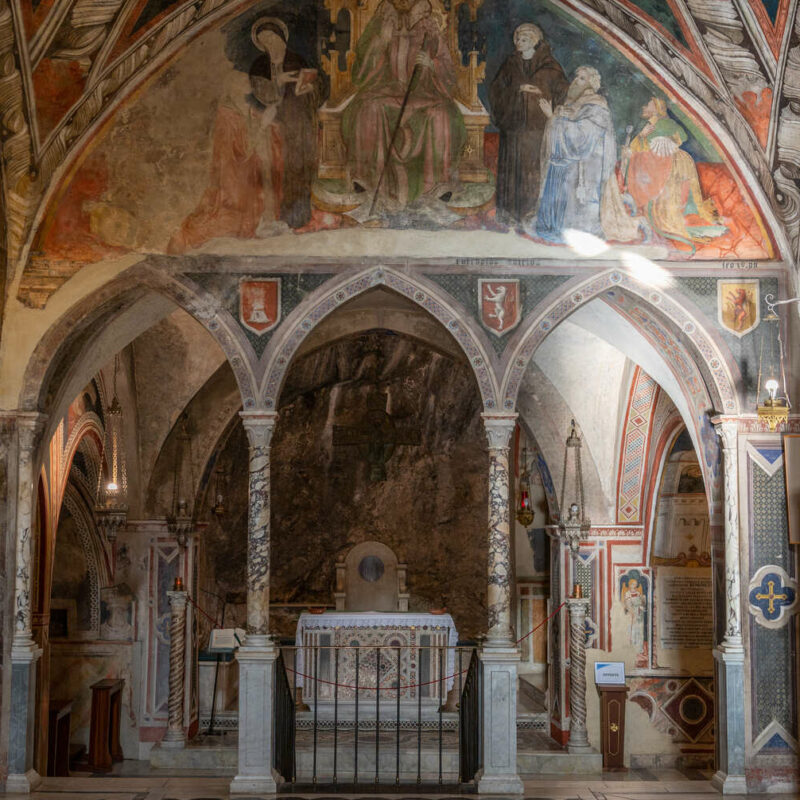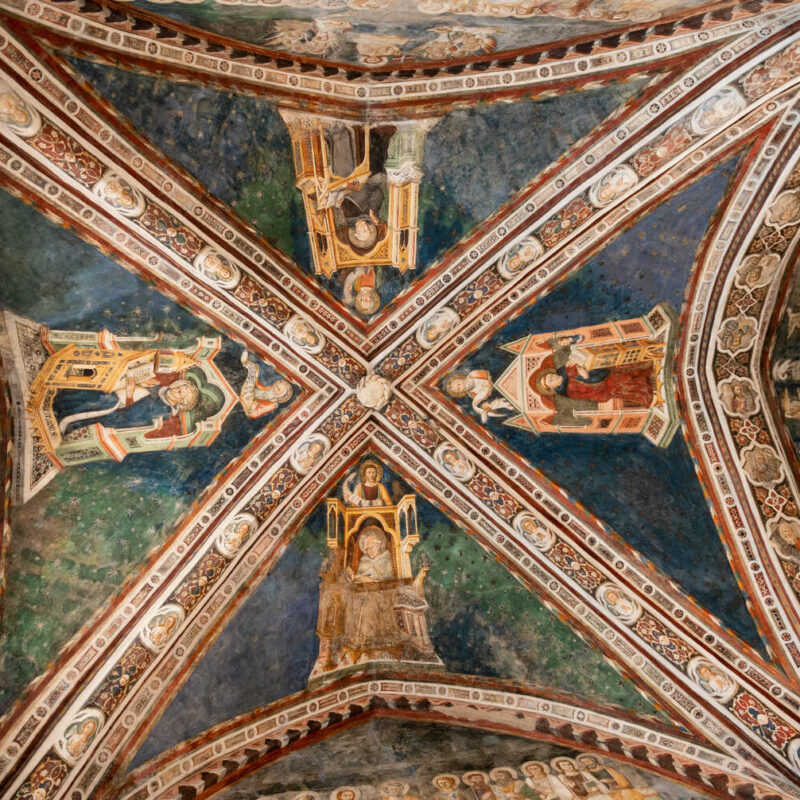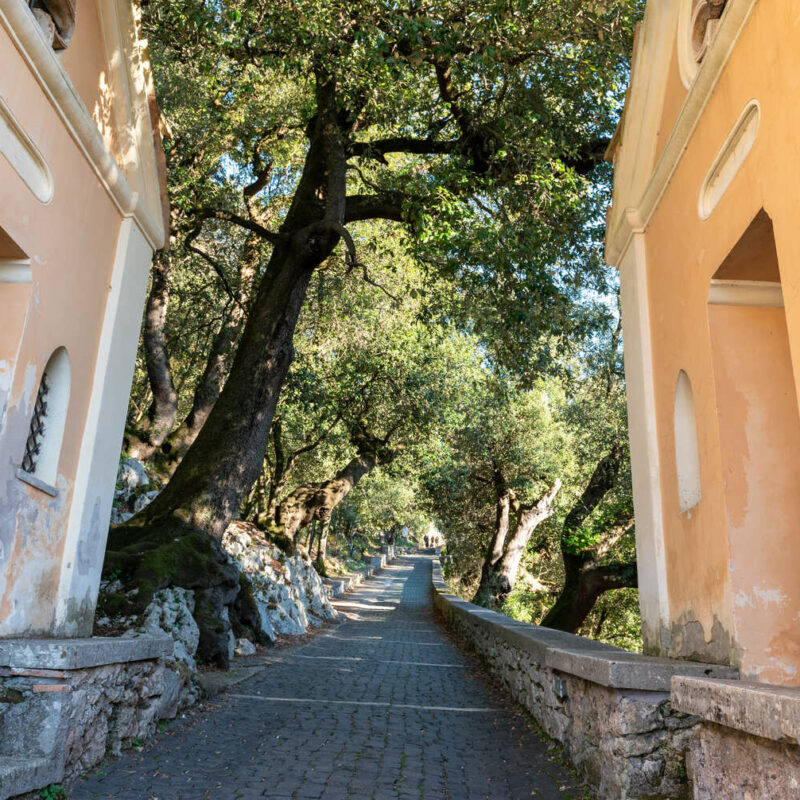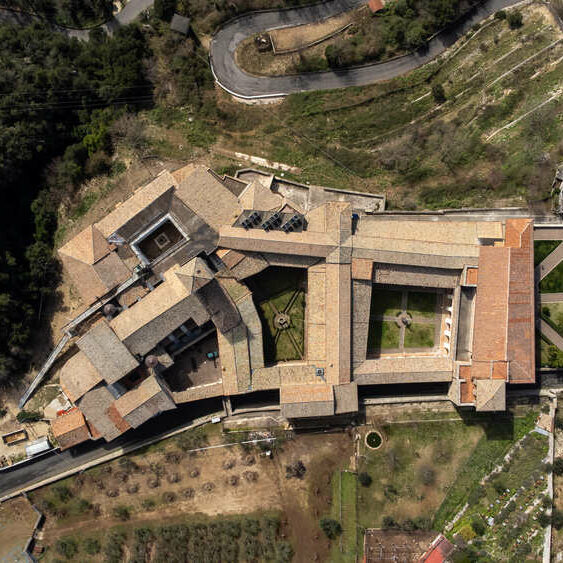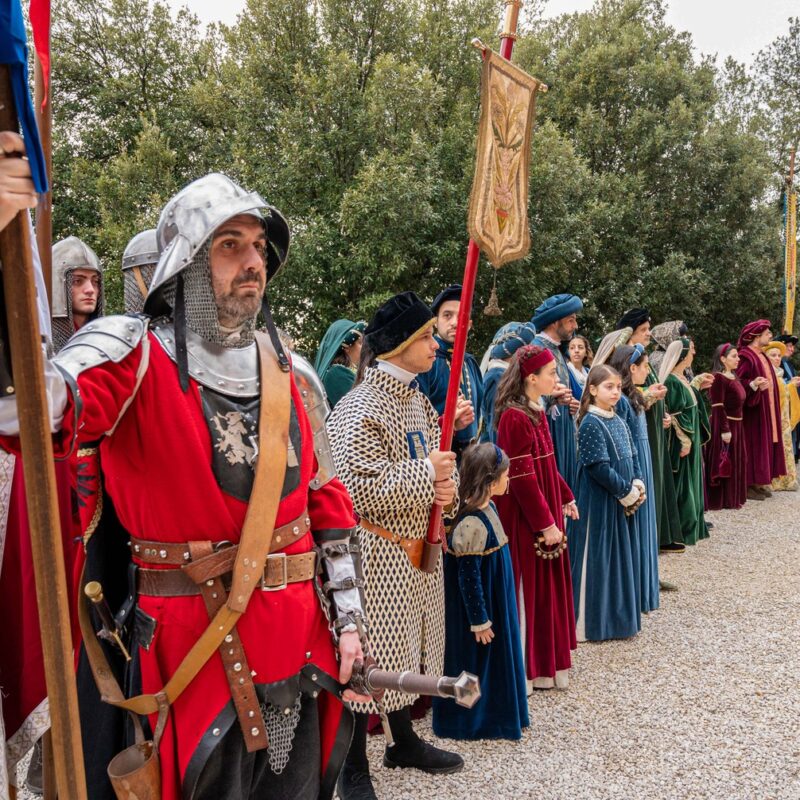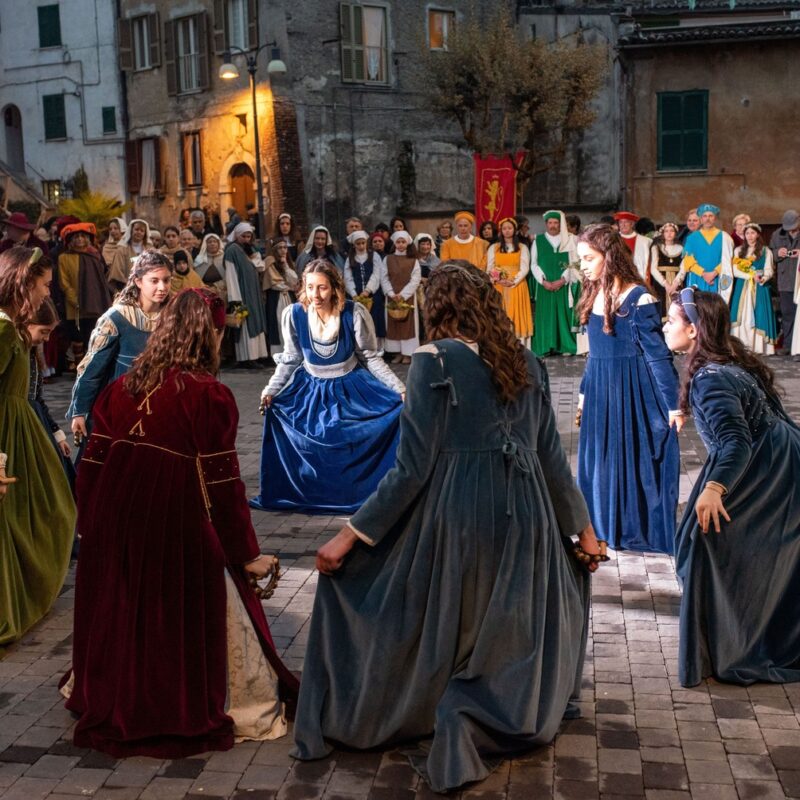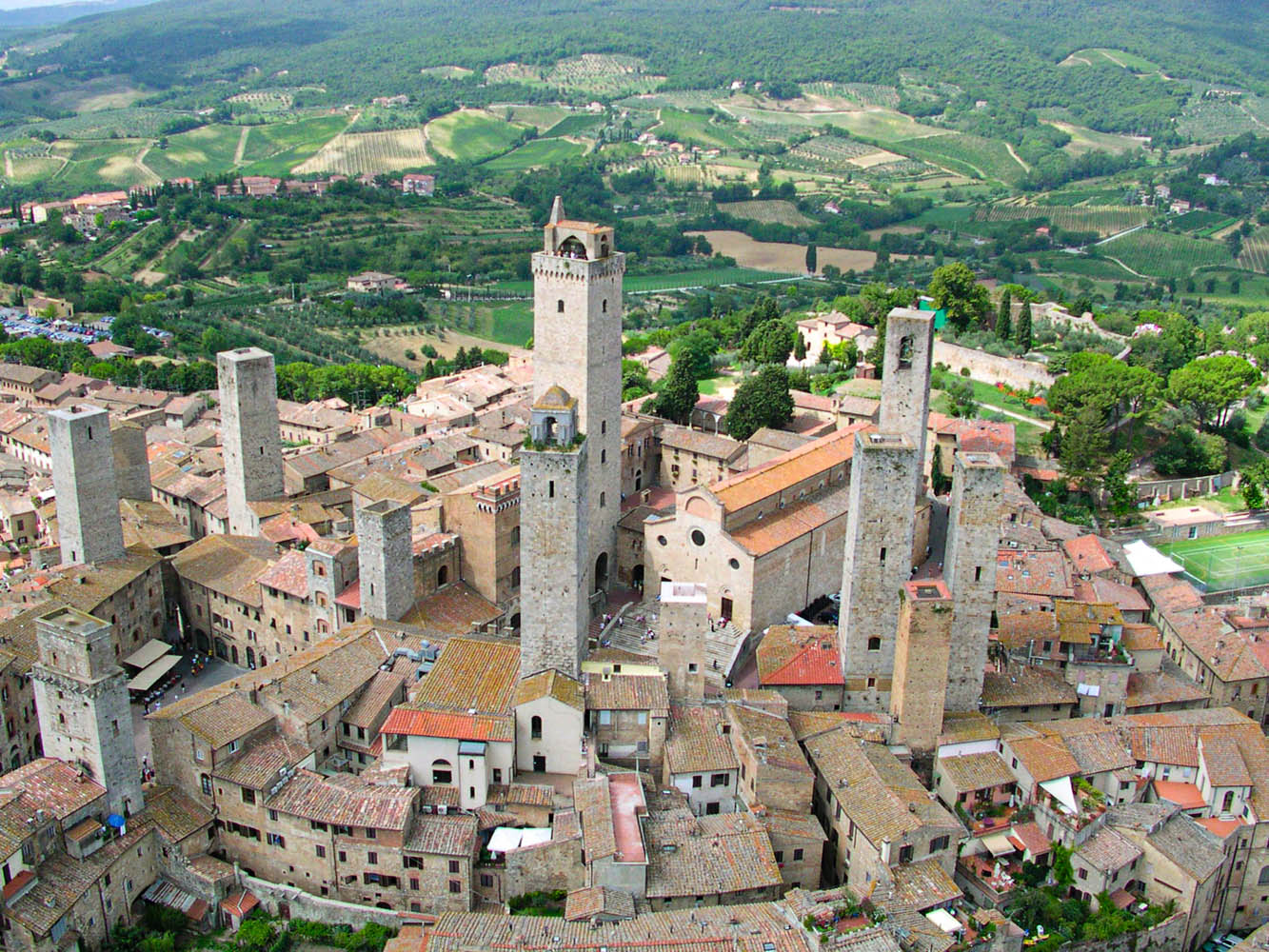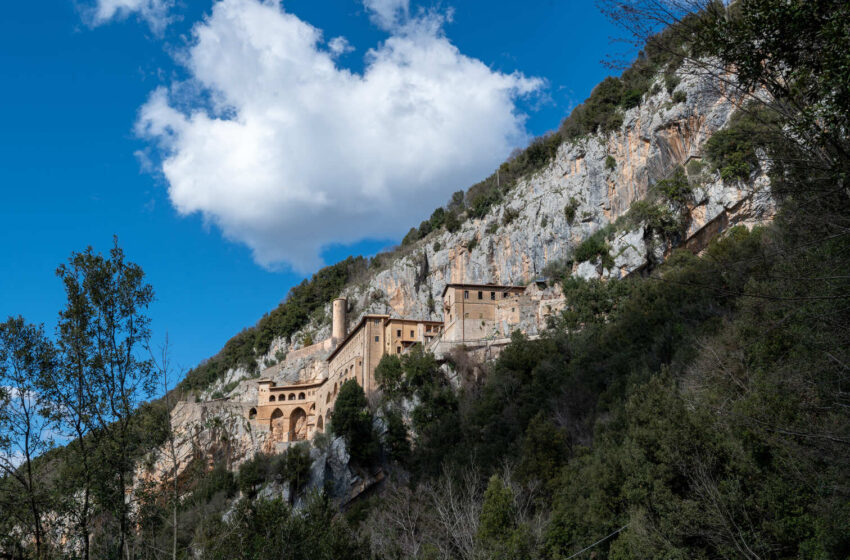
On the Threshold of Paradise: Subiaco and the Monastery of San Benedetto
To the author of the Canzoniere, the superhuman sensation of peace and serenity of the Monastery of San Benedetto in Subiaco aroused such a profound and vivid emotion that he defined it Paradisi limen (threshold of Paradise). Centuries later, the magnificent monastery where the Sacred Grotto can be admired, the cave in which Benedict of Nursia lived in penance and contemplation, still preserves its mystical charm and sublime serenity. The religious complex, nestled in the rock of Mount Talèo overlooking the valley below and consisting of two superimposed churches built between the 12th and 14th centuries, still represents today, despite the insults of time, a marvelous example of sacred architecture adorned with works of art of immeasurable beauty
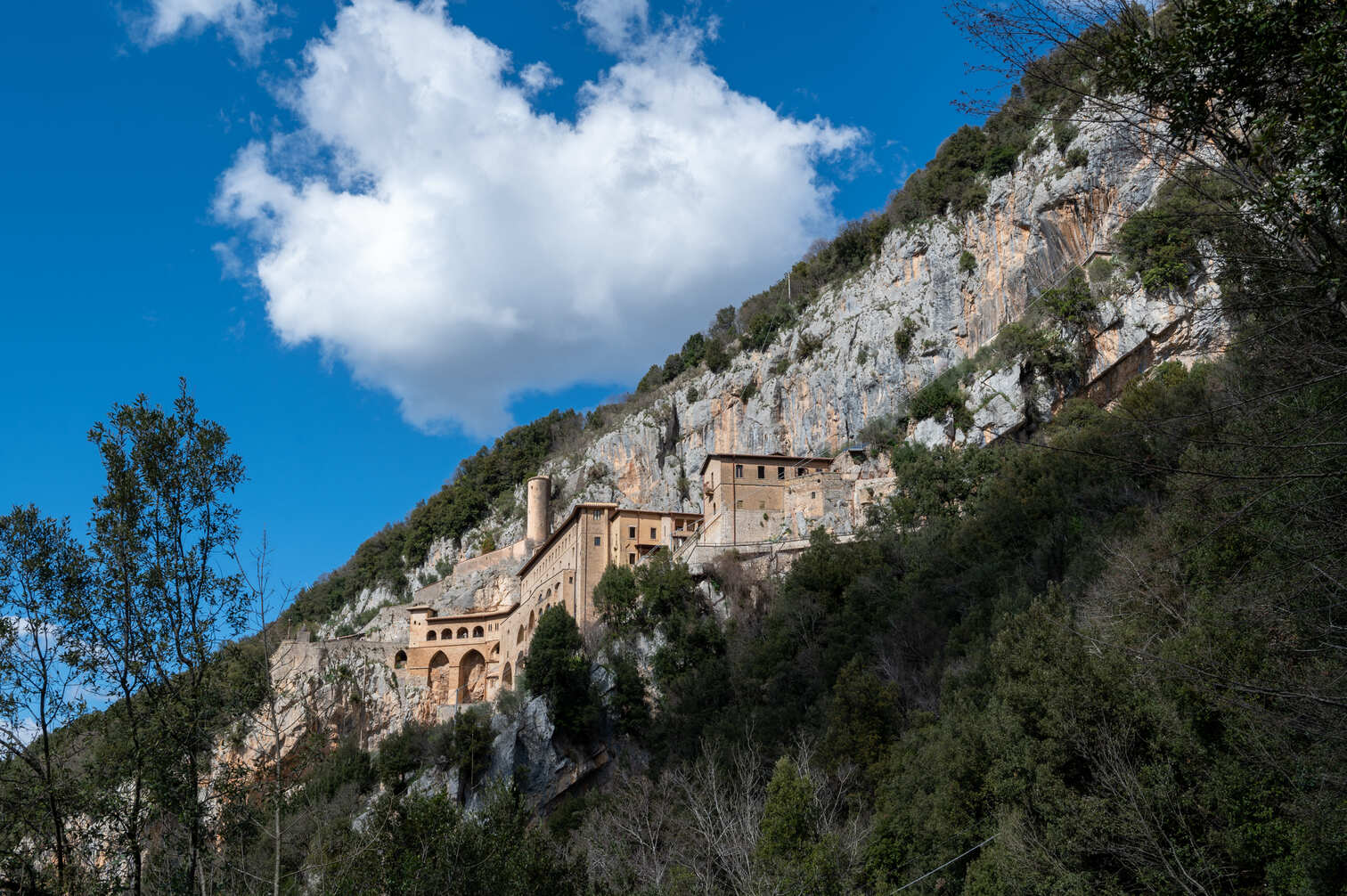
The upper church, built in the 14th century and accessed by three corridors with Umbrian school frescoes from the 15th century, features a magnificent 13th-century pulpit, 14th-century Sienese school frescoes, and 15th-century Umbro-Marchigian school frescoes. The lower church, with multiple levels carved into the rock, is covered in frescoes depicting the stories of St. Benedict (the most interesting dating back to the early 13th century); inside is the cave of St. Benedict, with the statue of the saint, a work by Antonio Raggi called il Lombardo (17th century), beneath the chapel of St. Gregory where one can admire the portrait of Francis of Assisi, his first image, probably painted while the saint was still alive, a work of extreme historical importance and exquisite craftsmanship like the frescoes in another chapel depicting the Life of Mary (14th century).
The ancient refectory houses an extraordinary 14th-century Last Supper, recently restored to its former splendor. Nearby, one can enjoy the spectacle of lush nature immersed in the serene solitude of the valley, and on hot summer days, even the coolness of the nearby lake named after the saint who found the path that would lead him to “withdraw his foot from the threshold of hell” at the age of only 17. The mark left by the founder of the monastic order, famous for his rule that combines prayer with work, is also in the twelve monasteries he founded during the thirty years spent in the Lazio village.
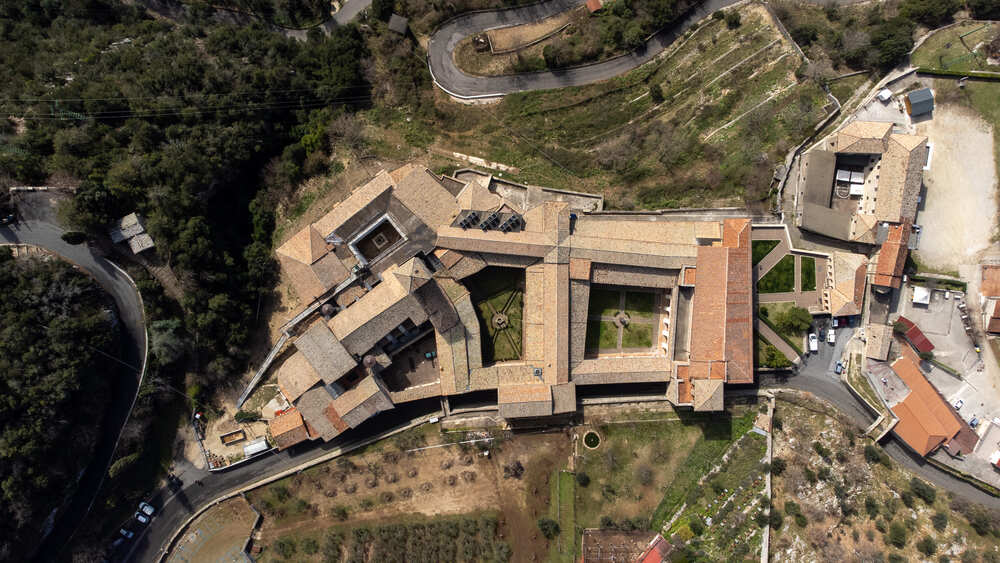
Of these, the only survivor is dedicated to his sister Santa Scolastica. Built on a hill east of Subiaco, it is the oldest Benedictine monastery in the world and also the “cradle of printing” in the Peninsula. Currently, it appears as a complex of buildings constructed in different epochs and styles. Over its entrance, the inscription “Ora et Labora” stands, with 20th-century structures leading into a first Renaissance cloister (16th century), from which one enters the second Gothic cloister (14th century) and from there to the last Cosmatesque cloister (13th century). Also noteworthy are the 12th-century bell tower and the current Church, a Settecento gem, the last of five churches stratified over the centuries. Santa Scolastica experienced its period of greatest prosperity between the 11th and 13th centuries, although even in the 15th century, it remained a renowned place, attracting two German clerics, Arnold Pannartz and Conrad Sweynheym, who established the first printing press in the Peninsula in the monastery premises, enriching the Library with precious incunabula, including the first printed book with a certain date, Lactantius’ “De divinis institutionibus adversus gentes,” printed in 1465.
For the concentration of these temples of spirituality, the valley on which Subiaco stands rightfully took on the appellation of holy, although as happens down here, the line separating Paradise from Hell is always thin. To remind us of this is the imposing bulk of the Abbey Fortress, built in the 12th century and several times remodeled over time, which, perched on a rocky spur, looms over the valley below.
A symbol at the same time of the civil and religious history of Subiaco (from the Latin Sublaqueum “under the lakes,” due to the two artificial lakes created under the reign of Nero, blocking the course of the Aniene), where the high notes of Benedictine spirituality mingle with the dark pages of human ambition. In the fortress, according to some historians, Lucrezia Borgia, the controversial daughter of the dissolute and corrupt Cardinal Rodrigo Borgia, commendatory of Subiaco in 1472, who ascended to the pontifical throne in 1492 with the name Alexander VI, is believed to have been born in 1480. The charm of the Lazio town, which earned it entry into the Association of the Most Beautiful Villages of Italy, is also manifested in the views of the historic center, those that so captivated Antonio Fogazzaro to the point of deciding to set one of his most controversial novels, “Il Santo” (1905), censored by the Congregation of the Index of Forbidden Books.
The Sublacensian atmospheres that enchanted the Vicenza novelist can still be relived today by strolling through the alleys of the historic center, breathing in the “scented air of wild herbs” or entering one of the characteristic workshops where the works in wood, iron, and terracotta, the fruit of the local artisans’ skill, are displayed, or finally stopping in one of the numerous trattorias where one can taste the local delicacies, cooked with the valley’s excellences, from “strozzapreti” to “ju pappaciùccu,” a hearty dish made from black cabbage boiled and mixed with cornbread and stale bread, to “ju fallò,” bread made with corn flour, passing through “la pulènna with pork spareribs” (for those who prefer fish, the “trotta in stew”), “bròccuji ncancarìti,” and ending with “je salame degliu re” (a roll of sponge cake with chocolate), and the famous “subbjàchini” (typical biscuits).
Gallery:
Credit foto:
Pierluigi Mercuri
Antonio Renzetti
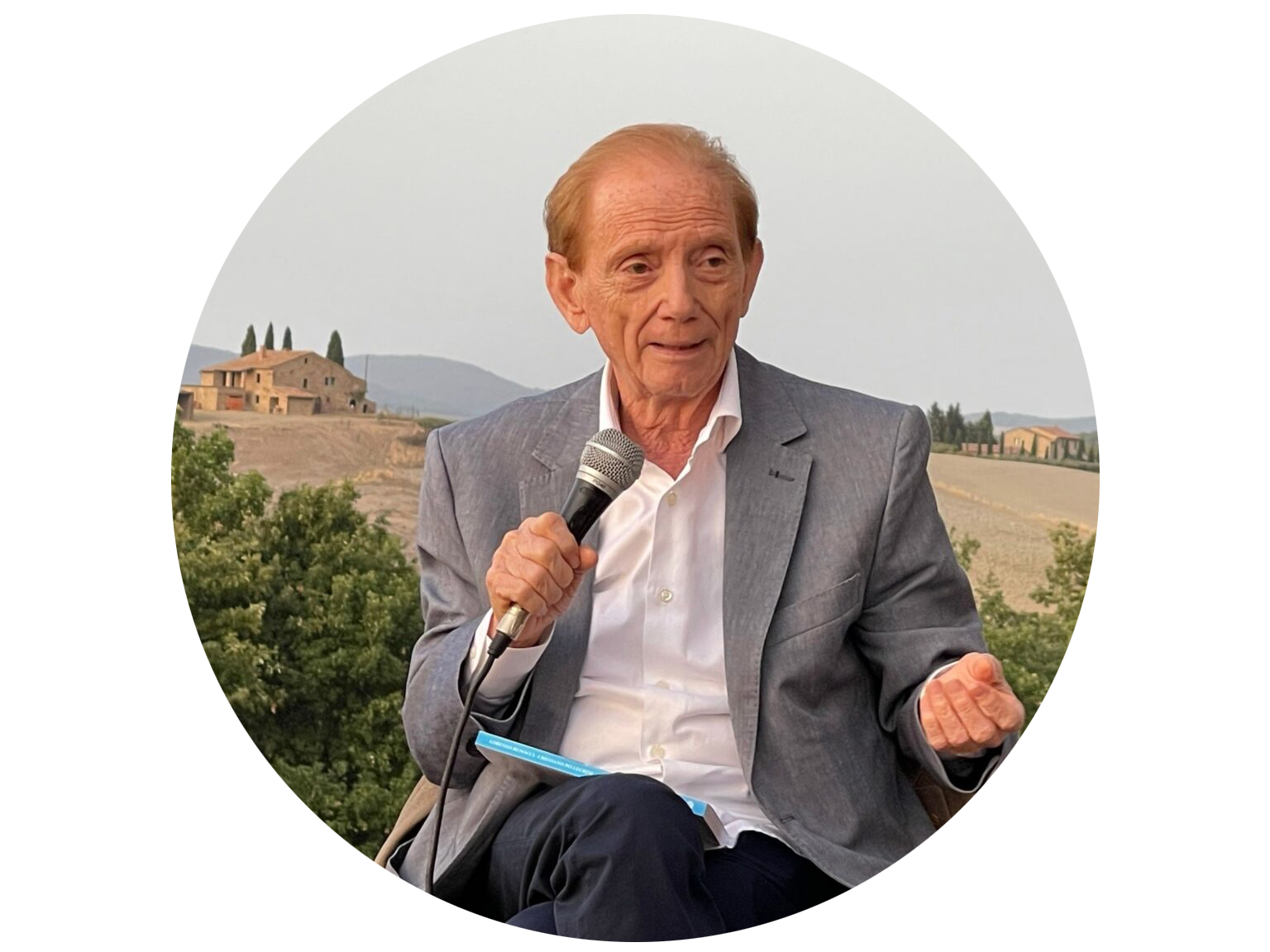
Giornalista italiano con oltre 40 anni di esperienza nel mondo dei media.
Leggi in:
![]() Italiano
Italiano





